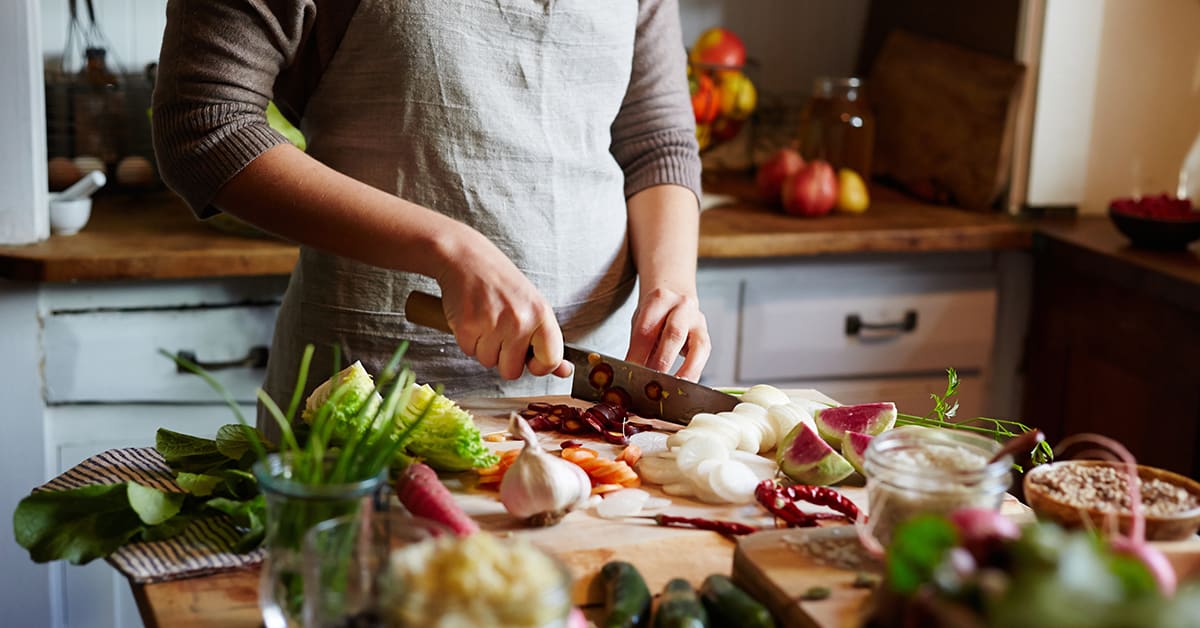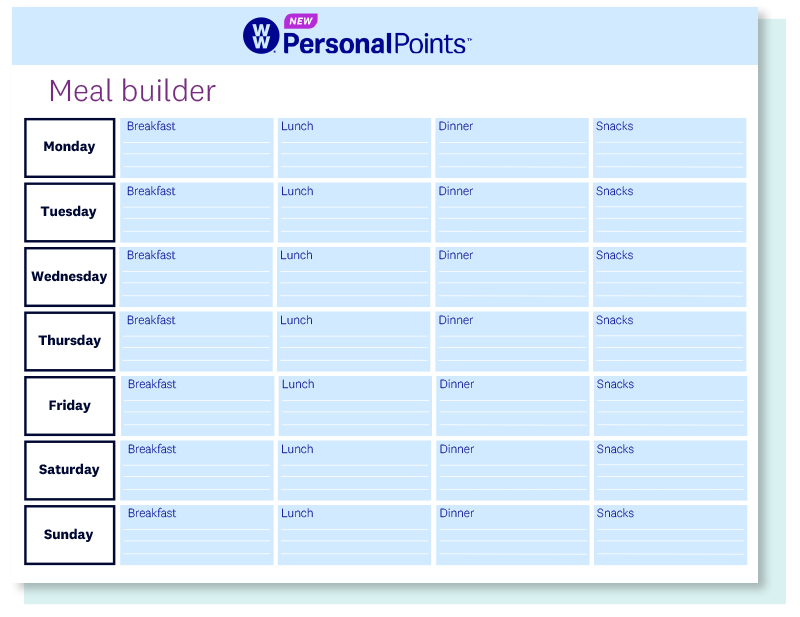Meal planning for beginners: A complete guide


Included in this article:
With conveniences like online grocery shopping and takeaway delivery services, you no longer need to figure out your next meal too long before you’ll eat it. But planning your menu a week in advance can save you time and money, and help you eat more healthfully too.
Don’t worry: Meal planning doesn’t have to involve elaborate recipes or even cooking every dinner. “It can be as simple or as detailed as you want, and you can change it as needed,” says registered dietitian, Jessica Cording. Read on for everything you need to know to set up and use a meal plan.
What is a meal plan?
A meal plan is a written list of what you (and your family, if you also have other mouths to feed) will eat for every meal over a set period of time. It can include things you cook as well as premade and restaurant meals; and it usually supports a specific goal, such as saving time, sticking to a budget, and/or eating healthier.
Meal planning includes choosing meals and finding recipes; shopping for ingredients; as well as prepping and cooking food. A meal plan needs to take into account the following factors:
- How many people you’re feeding: Whether you live alone or have a big family, you’ll need a head count to plan portions. The answer may differ for some meals, depending on your family’s schedule.
- Dietary restrictions: Consider everyone’s food intolerances, allergies, and preferences.
- Your goals: Are you making a meal plan to help you save time? Cut costs? Lose weight? Your goals affect how often you’ll cook and the recipes you choose.
- Your schedule: “The biggest factor for success is to be realistic about how much time you can devote to planning and prep,” says Caroline West Passerrello, a registered dietitian and a spokesperson for the US Academy of Nutrition and Dietetics.
- Your cooking skills: Even if you hate cooking, meal planning can work for you. “Convenience items—like pre-cooked chicken—can be part of a plan,” West Passerrello says. Your menu might also include restaurant meals.
Meal plans and weight loss
If you’re trying to lose weight, a set menu can help. Meal planning helps you eat a healthier and more varied diet, and people who plan their meals are less likely to be overweight, according to a study published in the International Journal of Behavioral Nutrition and Physical Activity. The reason is likely twofold: a study in the International Journal of Obesity found that meal planners tend to eat less at meals, and experts say they’re also less likely to reach for unhealthy foods when hunger strikes.
Benefits of meal plans
Meal planning isn’t just beneficial for weight loss. It can also help you:
- Spend less money: Eating at restaurants and buying prepared foods is always more expensive than prepping your own food, Cording says. And even if you make takeaway part of your meal plan, you’ll be budgeting for it.
- Reduce waste: Every time you buy or cook more food than you need and throw out the extra, you’re wasting a valuable resource. Planning meals helps reduce food waste, which is smart for the environment (and your wallet).
- Save time: The time you spend planning a menu pays off during the rest of the week. When you know your meals in advance, you won’t spend valuable minutes debating what to cook, and you can buy all of your ingredients at once and do prep work in advance.
- Eat a more varied diet: Meal planning boosts the variety of foods you eat according to a French study. That prevents boredom and helps ensure you get all the nutrients your body needs.
How to meal plan: 6 easy steps
Meal planning shouldn’t be difficult, and it will take less time as you get used to doing it. Here’s how to start:
1. Set your goals.
“A few common goals are losing weight, watching your intake of sodium, and minimising intake of preservatives or additives,” Cording says.
2. Determine the number—and type—of meals you’re planning.
There’s no set formula here; the number of meals you plan may vary from week to week. You might only want to plan dinners, or maybe you want to figure out every meal of the day. Start by jotting down any meals you’re eating out, and then work around them. “Be realistic about your limits, schedule, and potential barriers,” Cording says. For example, many people find it’s easiest to cook three dinners a week and use leftovers and takeaway for the other nights.
3. Choose recipes.
When selecting recipes, keep in mind your goals, cooking ability, and time. The WeightWatchers® app and website have loads of recipes, but try tapping into friends and families for ideas as well. And if you know you’re going to be super busy on a certain day, plan for a simple “recipe,” like a pre-cooked BBQ chicken with a simple green salad and instant brown rice. “It still counts as preparing a meal,” Cording says.
4. Make a shopping list.
First, write down the ingredients and quantities you’ll need for each recipe. Then, add up the quantities of the same foods to make sure you’ll have enough. Next, check your pantry and fridge: Cross off any ingredients you already have off your list or readjust quantities as needed. To save time grocery shopping online or in store, sort your grocery list into food categories like fresh fruits and veggies, grains, proteins, dairy, and canned foods. Don’t forget to add condiments as well as packaged and convenience foods.
5. Meal prep.
Meal prep might include anything from chopping garlic and stir-fry veggies to roasting a chicken or cooking a batch of grains: Your goal is to create pre-cut (and sometimes even pre-cooked) batches of ingredients to make it easier to make your chosen recipes throughout the week. How you prep for your week depends on your schedule. For example, you can do it all at once on Sunday or get cooking a few evenings a week for upcoming days. Either way, you’ll want to store your ingredients in separate containers and organise them in the fridge according to the type of food (for example, all produce together) or recipe.
6. Cook!
Since you’ve already planned what to make and prepped the ingredients, cooking should be easier than ever. Just make sure you schedule enough time to put it all together before mealtime.
What is a weekly meal planner?
A weekly meal planner is a physical or digital calendar for meal planning. It helps you stick with your plan, decide what you need to buy, and develop menus for other weeks. You can try using the menu planning tool in our WW app included in your WW membership—but low-tech options also work.
If you’re feeding multiple people, it’s helpful to post the plan in a common area. “Have one place where everyone can see what’s coming up, so you’re all on the same page,” Cording says.
Sample weekly meal planner
Sample menu plan
Use this sample menu, which includes some favourite WW recipes, as inspiration for your first week’s plan.
Breakfast | Lunch | Dinner | Snacks | |
|---|---|---|---|---|
Monday | Mixed berry overnight oats | Meatless Monday! Mixed bean chilli | 1 small skim cappuccino 200g 99% fat-free plain yoghurt topped with diced fruit & 2 tsp honey | |
Tuesday | Baked potato topped with chilli from Monday’s dinner | 1 piece of fruit Cheese & tomato sandwich thins | ||
Wednesday | Leftover mixed berry overnight oats | 2 x sushi balls | ||
Thursday | Leftover kale & bacon frittata | 2 tbs beetroot dip & veggie sticks 1 piece of fruit | ||
Friday | Leftover kale & bacon frittata | Order in pizza; with chickpeas salad | 30g mixed nuts 200g 99% fat-free plain yoghurt topped with 2 chopped fresh dates & 2 tsp honey | |
Saturday | Out for dinner | 2 tbs hummus & 10 x brown rice crackers 1 piece of fruit | ||
Sunday | Falafel wrap | Quick chocolate pudding |
Going beyond the meal plan
It can take a few weeks to get used to meal planning, but once you do you’ll discover it can help save time and stress. Just keep in mind: Sometimes you may have to nix your scheduled menu because you’re missing a key ingredient or you ran out of time to cook—and that’s okay. “Try to have a backup, like a note on your phone with what to order from your favourite takeaway spot,” Cording says. “That way you’re not stressed out in the moment.”
